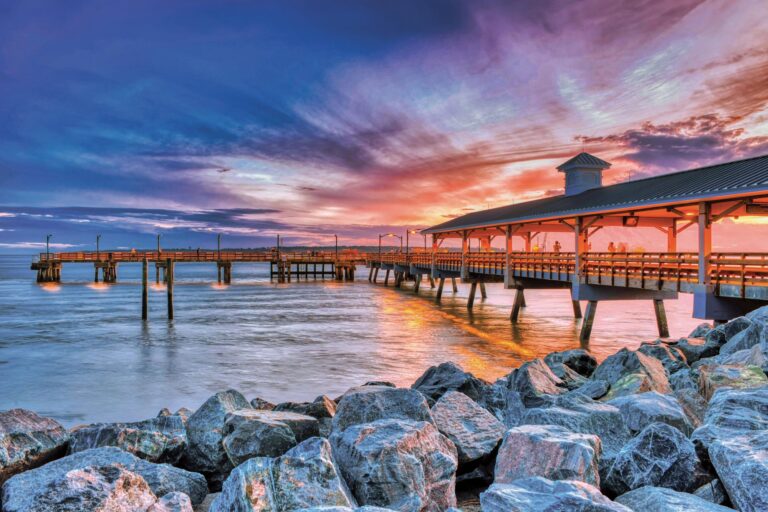
Cheoy Lee Global 103 Pilothouse Motoryacht
Every artist longs to produce works of enduring quality— works that capture the hearts of generation after generation. We’ve labeled these works timeless, and this was Mike Burvenich’s goal in the design of the Cheoy Lee Global 103 Pilothouse Motoryacht.
Burvenich has anchored this design via a lovely clipper bow and gently rounded transom. Each of these elements alone adds grace and elegance, but they are more effective as a team. Straightening the stem and squaring off the transom would have created a harsh, aggressive look more befitting a patrol boat than a yacht. The subtle S-shape sheerline links the ends. If you place a straightedge over the profile, you’ll see that the sheer rises slightly from the stem. This style of sheerline is common on sportfishing boats and is a good way to gain height belowdecks without making the yacht look bulky. The rubrail, engineroom vents and portlights break up the expansive topsides, reducing the perception of height.
As so often happens in the design of a yacht for production in series, the general arrangement plan dictates to a certain degree the shape of the superstructure and its relationship to the hull. The master stateroom, for example, is located on the main deck forward of the saloon and other public areas, forcing the designer to intrude on the foredeck. At first glance, the foredeck seems too short, but more careful study shows that it’s about the same length as the cockpit. This spatial relationship centers the entire superstructure on the hull. Burvenich also centered the pilothouse over the main deck. He refers to this level as 01, or skylounge level. In addition to the appeal of this visual symmetry, locating the pilothouse amidships reduces the pitching motion at the helm to nearly zero. The helmsman will stay fresh and alert for the entire watch during runs in rough seas.
Character lines divide the superstructure’s surface into visually manageable and distinctive segments. The line that runs from the after extremity of the 01 level forward to the sweptback fascia of the main deck delineates the surfaces above it and seems to form a cap over the master stateroom and saloon. Burvenich also uses character lines, this time in a gentle fastback style, to define the Portuguese bridge and set off the pilothouse from the rest of the superstructure. These elements decrease our perception of the height and mass of what is a large yacht.
Fashion panels, as Burvenich calls them, appear to support the upper deck the way flying buttresses in ancient times supported the vertical walls of buildings. Raking them at identical angles contributes to the design’s harmony. Other styling cues also help maintain harmony. The rake at the forward end of the main deck, though opposing that of the fashion panels, nearly matches their angle. If you draw a straight line from the after panel and one from the main deck’s fascia, the lines cross at amidships above the pilothouse.
Burvenich told me that he based the hull of the Global 103 on the one he drew for the 95/100 series Cheoy Lee motoryacht. That hull had been extensively tested in the towing tank and at sea and has proved to be seakindly and economical. Its fine entry transitions into a broad straight run that ends in 13 degrees of deadrise. Although this is a semidisplacement bottom, its straight buttock lines and wide chine flats give it a speed/length ratio close to that of a true planing hull. It should cruise comfortably at 20 to 25 knots and top out in the upper 20s.
Good performance coupled with the Global 103’s purity of line and shape, and the happy cooperation of all the styling elements working for the good of the whole, ought to earn it a place on the chart of timeless design.
LOA: 103′
Beam: 22’2″
Draft: 5’7″
Displ.: 220,000 lb.
Fuel: 5,500 gal.
Water: 650 gal.
Power: 2 x 1,925-hp Caterpillar C32 ACERT diesels
Cheoy Lee Shipyards, (954) 527-0999; www.cheoylee. com; M.G. Burvenich Yacht Design, (772) 288-1674; www.mgburvenich.com









